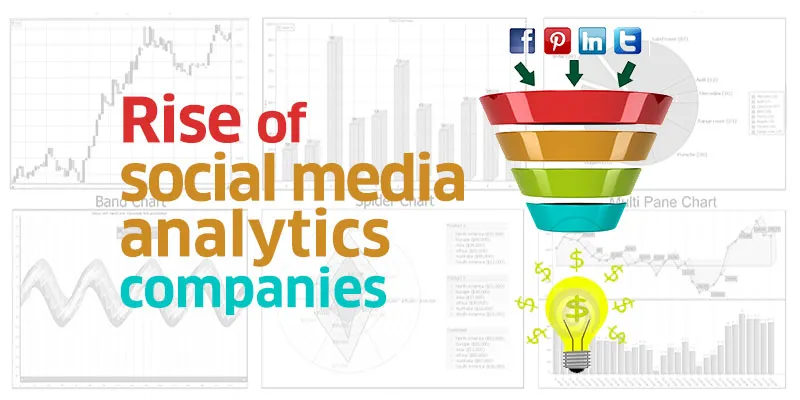Right time to dip into the social media analytics market

Social Media has led to the birth of an entirely new industry. With more and more companies recognizing the power of social media, the demand for enablers in the space has increased. Be it HCL's coolest-interview-ever campaign or other conglomerates lapping up the new marketing medium, we've reached a consensus that social is going to be a huge part of a company's (or individual’s) functioning.
Globally, Gartner puts the social media analytics market at $1 billion in 2012 and growing 34% annually. For India, the official figures are not out but the digital marketing sector is $400 million out of which 5% can be assumed for social media analytics which puts the figure at $20 million, says Bhupendra Khanal, founder at Simplify360.
Why is social media important for a brand?
“Brands need five things to survive: awareness, advocacy, sales, support and talent. Social media is the most efficient enabler of the above,” says Rohan Chandrashekhar, founder at BuzzValve. Social media serves some very important functions for a brand:
1) Communication: social media opens up a channel of communication which is very personal and real time
2) Reputation: Social media is very transparent and is an excellent opportunity for brands to build a reputation for the values they stand for
3) Research and feedback mechanism: social media allows brands to be tuned into what the public is saying in general and how they can improve their offerings
The rise of social media analytics
Social media also brought the noise along. More adoption meant an open space for people to vent out. Millions of opinions found their way out in the open. The next problem was to make sense of all this noise and this is where an analytics layer was built on top of social media.
Prasant Naidu, founder of Light House Insights, a blog that covers social media, provides a useful list:
1) Listening tools- they go through all the chatter and give you insights relevant to your brand (Germin8, Airwoot, Simplify360)
2) Social media account management- these companies have tools that help companies manage their accounts (likes of hootsuite)
3) Brand monitoring- they go a step further and give you deep insights by analyzing all the social media activity that help companies to monitor the brand (likes of Unmetric)
Airwoot, Simplify360 and Unmetric are all prominent players in this analytics space with Airwoot raising funds from Kae Capital, Unmetric from JAFCO and Nexus Ventures, and Simplify getting acquisition offers from some big players. The space is slowly maturing. Sasha Mirchandani, founder at Kae Capital, says, “Earlier, the brands needed to be educated about the social customer support but now we see that they themselves are getting very proactive towards it. The market has also opened up and social media analytics is a global opportunity.”
The relationship between analytics companies and brands
All the big brands (FMCG companies, banks, etc) have awakened to social media, and the analytics companies exist to help brands perform better and improve their processes. For a brand, there are a plethora of options available and they have to pick the ones they're comfortable with.
On the other hand, there are the analytics companies which need to educate and customize their solutions for the brands. “How a brand looks at social media is very important. The tools you use shouldn't be only for online reputation, there is a much deeper play here,” says Saurabh Arora, Co-founder of Airwoot. Most of the tools or agencies just focus on taking the negative comments offline and amplifying the positive feedback. This is not an intelligent way of using social media, according to Saurabh. Intelligence from social media is much broader and deeper part of a business process.
For the analytics companies, convincing the brands to try out their product is also tough. The chief marketing officer and the chief operating officer are both involved while making the decision for a brand and the tool (analytics company) will only be accepted if the proposition is rock solid. An average sales cycle can take up to a year.
Where is the space heading?
Social media has gained prominence but it is still small in comparison to more traditional means like email. “Social is only 15-20% of the email feedback that a brand gets,” says Saurabh. The number is closer to 40% for international brands.
Rohan of BuzzValue gives a different perspective to the space. “For brands who have embraced 'social business', cost isn't the motivation. More importantly, the Indian market doesn't need more social tools/software, we need more social policies, mindsets and an obsession for data.”
But at the end of the day, it comes down to the value add a product brings in. If a product is helping the brands and they can see the ROI, they'll lap it up.
Social is on the rise and with more and more platforms getting user adoption i.e. more people becoming active on social media apart from Facebook and Twitter -- social will probably become the most important channel to gauge consumer sentiment. And social media analytics companies will be riding pretty on the wave.







